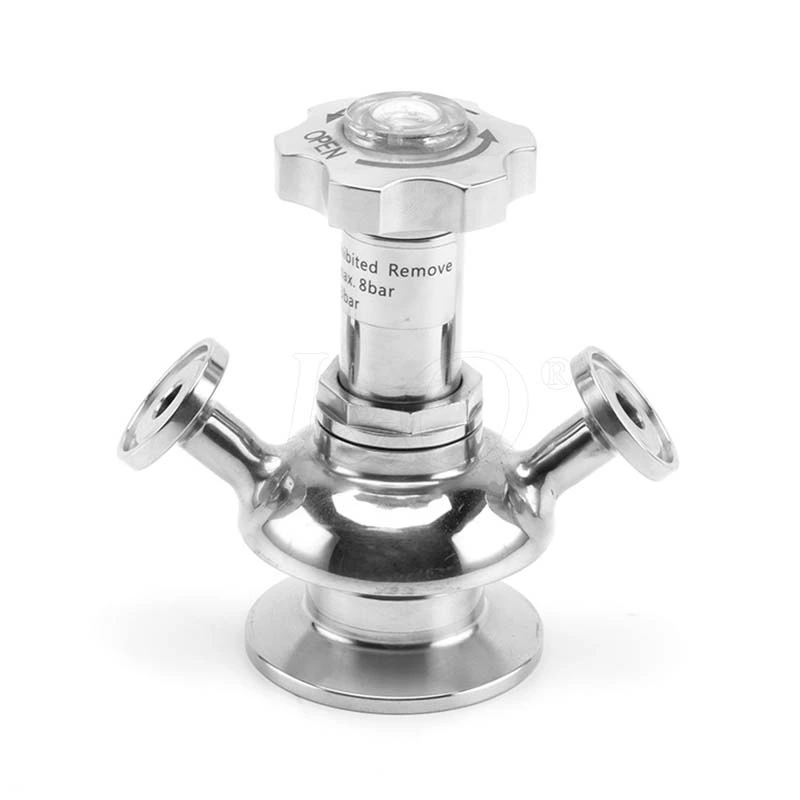Introduction To The Structure Of Sterile Sampling Valve
Sanitary Sampling Valve is a valve used to obtain medium samples in pipelines or equipment. In many occasions where chemical analysis of medium samples is required frequently, special sampling valves are often used. According to the working principle or performance of sampling, sampling valves are mainly divided into three types, including double-opening valves, flange clamp valves and sampling valves with insulation jackets. 1. Aseptic sampling valve is a more commonly used sampling valve, usually composed of two connected ball valves, and its characteristics are safe and stable sampling. During the sampling process, first close the A valve close to the equipment and pipeline in the double-opening valve, and then open the B valve to let the medium flow into the space between the two valves, and then close the B valve and open the A valve, and place the sampling vessel at the sampling port to hold the sampling medium. 2. During the use of the sampling valve with insulation jacket, if you encounter a situation where you need to use the insulation jacket, you should pay attention to the fact that you cannot force the valve to open before the medium is not *melted during operation. You must wait until the crystals in the valve are melted before you can open it. Open the valve, otherwise it is easy to cause safety accidents.
3. When the aseptic sampling valve is in the closed state, the spring tension or other pressure pushes the ejector pin, and the ejector pin presses the sealing rubber head against the opening of the tank wall to achieve a sealing effect; if sampling is required, steam or other sterilization medium is introduced from one of the sampling ports to fill the entire sample chamber and drain it from the other sampling port. After a certain period of time, the sample chamber and the sampling port are in a sterile state; then the handle is pulled to contract the spring and the ejector pin is relaxed, so that the sealing rubber head is separated from the opening on the tank wall, so that the sample flows out of the tank through the sample chamber and is collected from the sampling port; after the sampling is completed, the hand wheel is turned to relax the spring, and the sealing rubber head is pressed against the opening of the tank wall again by the ejector pin; clean water is introduced to discharge the residual liquid in the sample chamber (if the sample is a cleaner medium such as sterile water, this step can be omitted), and then the sterilization medium is injected to seal and retain it for the next sampling.
